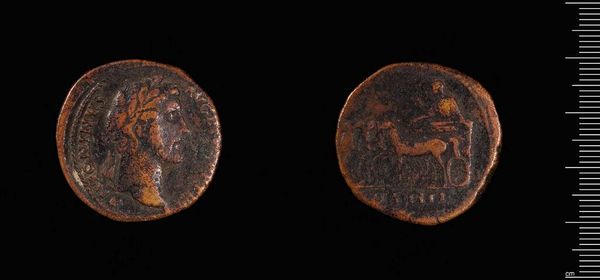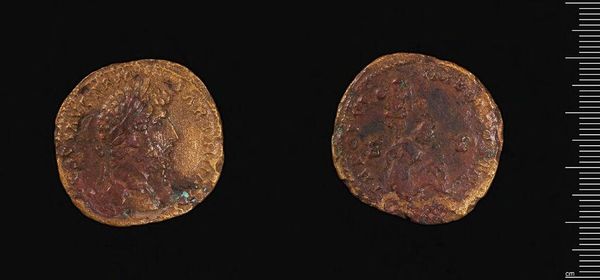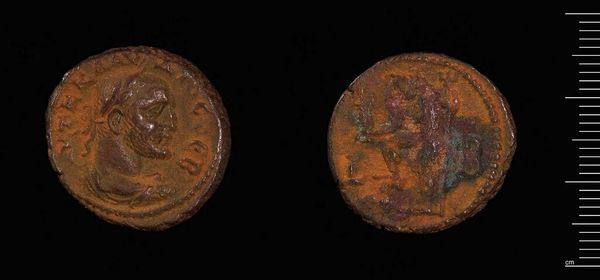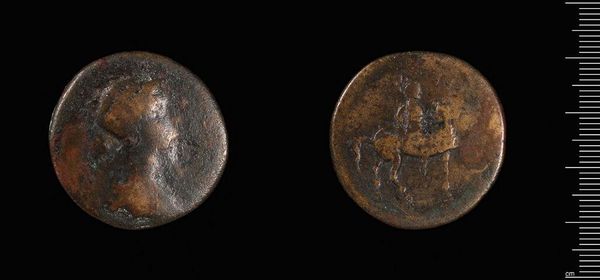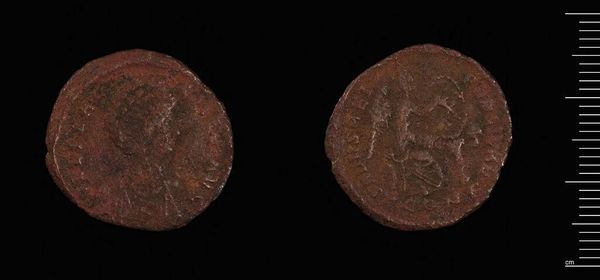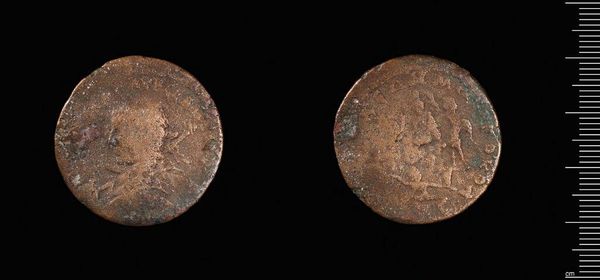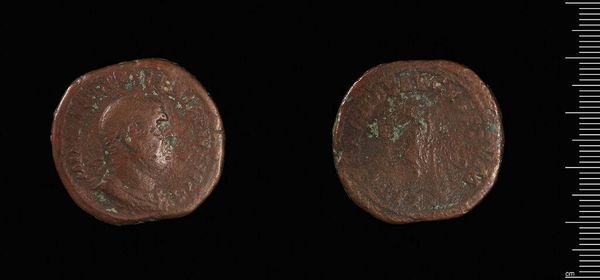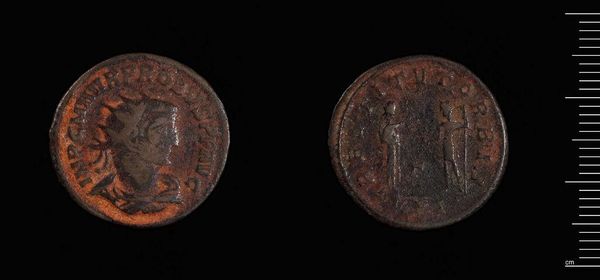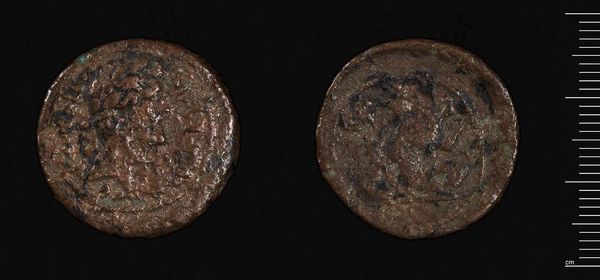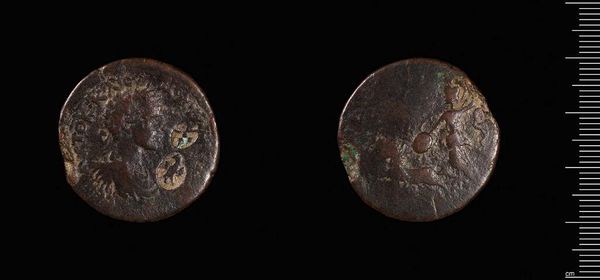
Dimensions: 21.69 g
Copyright: CC0 1.0
Curator: Isn’t it amazing how a humble object like this Sestertius of Antoninus Pius, held at the Harvard Art Museums, can whisper so much history? It weighs just over 21 grams, but it feels so much heavier with story. Editor: It certainly looks its age. I'm immediately struck by its pitted surface, the worn relief – a stark reminder of time’s relentless touch. Do you find the patina beautiful or simply indicative of decay? Curator: Oh, absolutely beautiful! To me, that wear is a kind of collaboration with time, a tangible connection to the hands that held it, the transactions it facilitated. It's about power and commerce, but it's also just a coin, you know? Editor: Precisely. The effigy of Pius himself is quite intriguing; observe the meticulous detail even amidst the wear—the curls, the set of the jaw. The composition is a deliberate statement of imperial authority, wouldn’t you agree? Curator: I do, but I also can't help but imagine some Roman citizen, pulling this very coin from their purse to buy bread. It shrinks the centuries, gives me a shiver. Art isn’t just about emperors, it's about us. Editor: Perhaps. But by understanding how the coin was designed to project power, we understand how that citizen's life was consciously shaped by visual propaganda. It's a dialogue, really, between ruler and ruled, encoded in metal. Curator: Encoded indeed. It's just mind-blowing how a small piece of metal can hold such weight, isn't it? Editor: It is. It serves as a reminder that even the most utilitarian objects are imbued with cultural meaning and aesthetic intention.
Comments
No comments
Be the first to comment and join the conversation on the ultimate creative platform.
